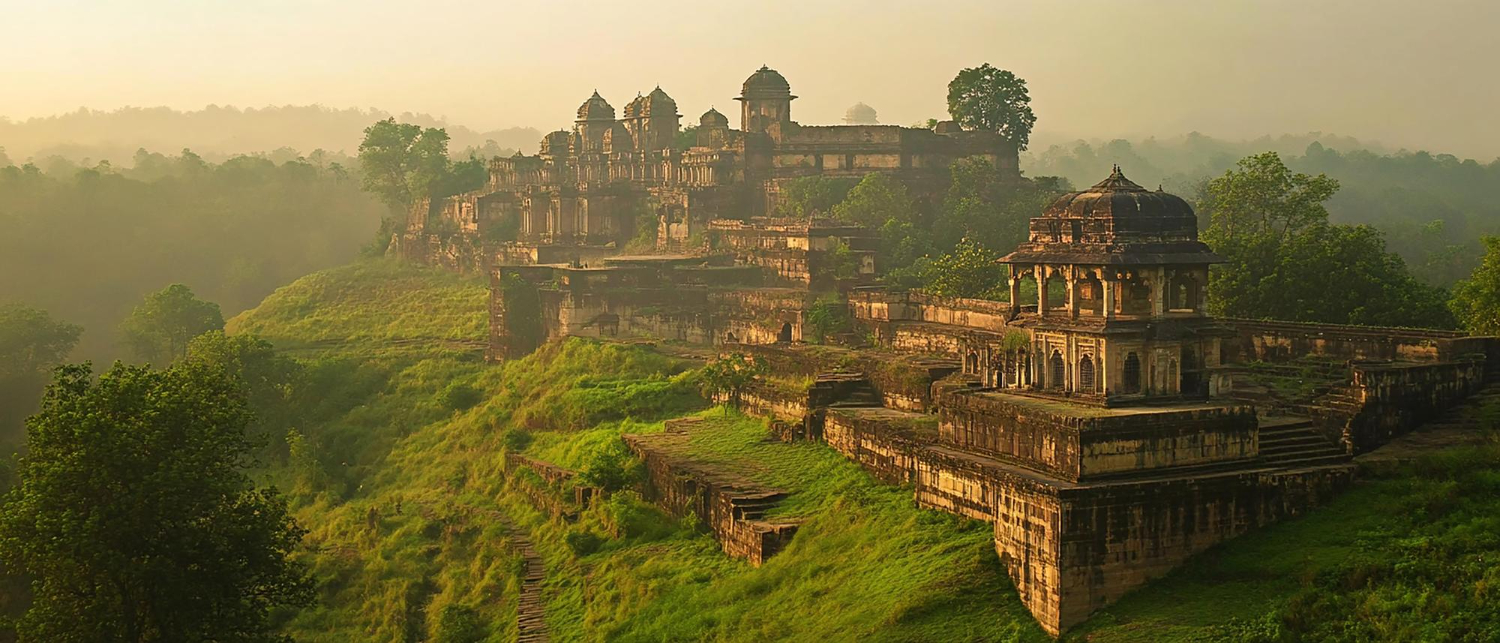Coorg, or Kodagu, is popularly referred to as the Scotland of India due to its green hills and misty scenery. But from July, when monsoon rains are at their peak, this hill district assumes an altogether different charisma. Apart from its legendary coffee plantations and waterfalls, Coorg has historic forts, ancient temples, and cultural sites that turn all the more romantic during the rains. If you're heading to Coorg in July, here's a guide to discovering its heritage.
1. Madikeri Fort – Where History Meets Mist
In the very centre of Madikeri town stands the Madikeri Fort, a 17th-century building that has witnessed various rulers from Haleri kings to Tipu Sultan and the British. July rains colour the fort walls a rich mossy green, and the mist surrounding the building gives it a film-like atmosphere.
Tips:- Go early morning or late afternoon when there are fewer people.
- Bring a light rain jacket; there is little covered area.
- The museum within (old church) is not worth a visit for the local history displays.
2. Omkareshwara Temple – Gothic and Islamic Fusion
It takes a short walk from the fort to reach Omkareshwara Temple, constructed in 1820. The Shiva temple is recognized for its distinctive architecture, a fusion of Islamic domes and Gothic features. In July, the temple pond brims with monsoon water, and the environment is peaceful with less tourist activity.
Tips:- Footwear is not permitted within, use a plastic bag to carry them when there is rain.
- Don't miss reading the wall inscriptions explaining the history of the temple.
3. Nalknad Palace – Hidden Deep in the Hills
Too often neglected, the Nalknad Aramane (Palace) at Kakkabe was originally the royal retreat. Dating back to 1792, it's fringed by teak forests that become verdant in July. The mud huts, wooden posts, and paintings provide a glimpse of Coorg's past royalty. With rain as an added rhythmic score, it becomes a meditative experience.
Tips:- The road leading up can be slippery, best for vehicles with good ground clearance.
- Group tours are restricted; read beforehand or take a local guide.
4. Talacauvery – Source of River Cauvery
This holy place is said to be where the Cauvery River originates. Although monsoon clouds usually hide the view, the Brahmagiri hills around are beautiful in the rains. Pilgrims travel throughout the year, but July experiences a spiritual quiet, as the climate keeps away big crowds.
Tips:- Take a raincoat and do not use umbrellas because of the wind.
- Visit with a trip to the nearby Bhagamandala Temple, famous for its Triveni Sangam.
5. Gaddige Tombs – Serene and Under-the-Radar
The Raja's Tombs or Gaddige, a few kilometers from Madikeri, contain the mortal remains of Kodava royalty. Indo-Saracenic style buildings stand watch over rain-washed valleys.
- The location is serene, perfect for photographers.
- Morning is best because fog tends to roll in later during the day
General Monsoon Travel Tips for Coorg in July
- Take proper footwear: Rain-proof sandals or gripped trekking shoes are the way to go.
- Pack light and waterproof: Quick-dry outfits and ponchos are preferable to heavy umbrellas.
- Use local transport: Roads may become muddy; local autos or cabs are usually better prepared.
- Be near town: Madikeri and Virajpet have better connectivity to medical and transport facilities in event of heavy rains.
Who Should Visit?
- Families can appreciate the cultural diversity and offbeat tourist areas.
- Couples will adore misty romantic scenery.
- Single travelers can absorb heritage on their own schedule, with secure homestays possible.
- Friend groups will enjoy trekking, street food, and heritage discovery. Just monitor weather warnings before going far.
Book your monsoon heritage trail with Aster Travels. We offer local guides, flexible accommodations, and weather-sensitive itinerary planning. Visit forts, temples, and more hassle-free.

